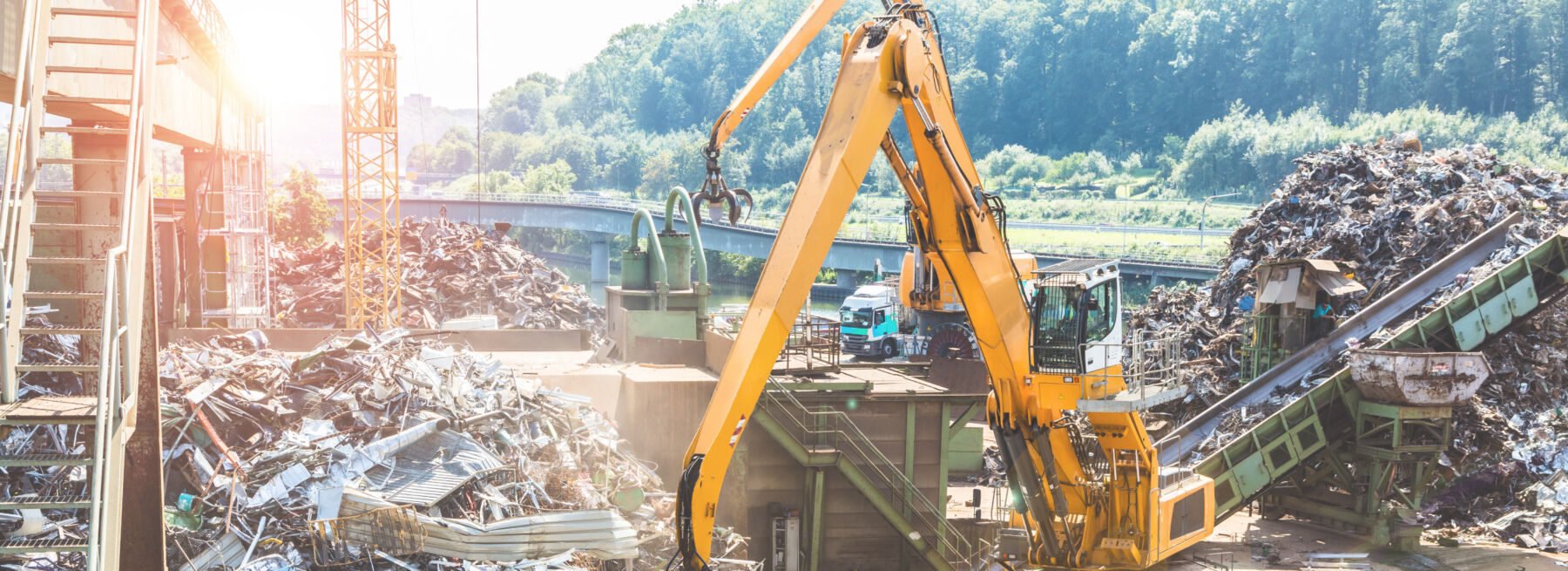The waste and recycling industry is a large sector that encompasses sanitation, solid waste, paper, and electronic waste recycling workers. According to U.S. Bureau of Labor Statistics data, waste collection workers experienced 4.4 injuries per 100 full-time equivalent workers, while solid waste collection workers had 4.7 injuries per 100 full-time equivalent workers. The BLS data on reported workplace injuries and illnesses indicates that injury rates increased after reaching the lowest rates since 2006, as confirmed by a WasteDive story.
The current rates are serious enough to warrant an investigation and the implementation of solutions to prevent further increases. According to WasteDive, there were 2.8 million nonfatal workplace injuries and illnesses, marking a 7.5% increase from the previous year. Additionally, the report confirms that refuse and recyclable materials collection jobs ranked as the seventh deadliest career in the U.S.
What can the industry do to change this? National Council for Occupational Safety and Health (COSH) co-executive director Jessica Martinez tells WasteDive that the organization advises prioritizing “system-wide engineering and operational changes” rather than focusing on safety policies around individual actions.
The organization also encourages waste and recycling companies to ask for safety feedback from workers, document safety and health problems, and conduct worker training in the employee’s primary language.
Top Waste and Recycling Worker Health and Safety Risks
While there have been federal regulations such as the U.S. Occupational Safety and Health Administration’s “walkaround rule” that improve safety, risks remain. Here are the top waste and recycling worker safety and health risks.
Exposure to harmful metals, chemicals, and biological substances
Waste and recycling workers handle a wide range of materials, such as electronic waste, household chemicals, and organic matter, which may contain toxic substances such as heavy metals, solvents, and pathogens. Direct contact, inhalation of fumes or dust, and skin absorption are common routes of exposure. These put workers at risk of acute and chronic health effects.
“Occupational health and safety, metal exposures and multi-exposures health risk in Canadian electronic waste recycling facilities” is a study that looked at electronic recycling exposures to metals. The study has found that health and safety practices are not adequate in most facilities. These can lead to kidney disorders and negatively affect the male reproductive, peripheral, renal, and central nervous systems.
Preventing exposure to harmful substances requires comprehensive risk assessment and control measures. Employers should provide proper personal protective equipment (PPE), such as gloves, masks, and protective clothing, to minimize direct contact with hazardous materials. Additionally, engineering controls, such as ventilation systems and containment measures, can help reduce airborne exposures to chemical fumes and dust.
Proper training on material identification, segregation, and disposal is essential to ensure workers understand the risks associated with handling different materials and know how to protect themselves effectively.
Furthermore, promoting good hygiene practices is crucial for minimizing the risk of exposure to biological substances among waste and recycling workers. Workers handling organic waste or cleaning up spills may encounter bacteria, viruses, and mold, which can cause infections and respiratory illnesses if they don’t follow hygiene measures.
Employers should provide access to handwashing facilities, as well as appropriate decontamination procedures and facilities for workers to clean themselves and their equipment after handling hazardous materials.
Moving machine parts and vehicles
Waste and recycling facilities contain machines with moving parts. Workers can encounter sharp, toxic, and other dangerous substances when working with conveyor belts, sorters, compactors, grinders, pulleys, and balers. They’re also at risk for crush injuries and even amputations when working by moving machine parts.
Moving parts need to have sufficient guarding to protect workers from these hazards. Another way to protect waste and recycling workers is to use lock and tag procedures. These ensure machines are shut down and can’t restart before servicing is done.
The weight of the materials requires waste and recycling facilities to rely on forklifts, front-end loaders, and other industry vehicles to move waste and recycling. This adds a risk of being hit or run over. The danger increases when workers operating these vehicles are fatigued, have inadequate training, or deal with poor visibility.
To mitigate the risks associated with moving parts and vehicles, employers must again prioritize comprehensive training and the following of safety protocols. Waste and recycling workers should receive thorough training on equipment operation, hazard recognition, and safe work practices.
Instituting regular maintenance and inspection of vehicles and machinery ensures they are in safe working condition and don’t have defects that could lead to accidents. Implementing traffic management measures, such as designating pedestrian pathways, hanging up signs, and creating restricted access zones, can help minimize the risk of vehicle-related incidents.
Furthermore, promoting a culture of safety awareness and accountability is crucial. Encourage workers to report any safety concerns or near misses promptly. The sooner they do this, the sooner management can investigate and fix hazards before accidents happen.
Repetitive motion and uncomfortable movements
Repetitive motion injuries often involve doing actions repeatedly such as lifting, carrying, reaching, and sorting materials. Workers may engage in these motions for extended periods. This can put a strain on the muscles, tendons, and joints.
One common repetitive motion injury among waste and recycling workers is musculoskeletal disorders (MSDs). These consist of conditions like tendonitis, carpal tunnel syndrome, and rotator cuff injuries. For instance, workers tasked with lifting heavy bins or sorting materials on conveyor belts may experience repetitive strain on their shoulders, wrists, and lower back, increasing their susceptibility to MSDs over time.
Preventing repetitive motion injuries in waste and recycling workers requires a multifaceted approach that addresses ergonomic factors and employee training. Employers can implement engineering controls such as providing mechanical lifting aids, adjustable workstations, and ergonomic tools to reduce the physical strain on workers’ bodies.
Additionally, institute training programs to educate workers on proper lifting techniques, the importance of maintaining good posture, and the significance of taking regular breaks to rest and stretch muscles. By empowering workers with the knowledge and skills to perform tasks safely and efficiently, employers can help mitigate the risk of repetitive motion injuries.
Another way to help prevent repetitive motion injuries is to incorporate job rotation. This involves moving workers through different tasks throughout the day to spread the physical workload more evenly, reducing the strain on specific muscle groups and joints. This approach also provides workers with opportunities to engage in varied activities, preventing monotony and fatigue associated with repetitive tasks.
How to Ensure Waste and Recycling Worker Safety
Studies show that safety concerns often go unreported. This is why waste and recycling facilities need to encourage a proactive approach to safety reporting. They can do this by establishing a culture of safety and reiterating this message in communications.
A company that provides incentives for following safety protocols and recognizes workers for their contributions to maintaining a safe work environment can also help foster a safety culture. It can be invaluable to have channels for anonymous reporting.
As previously mentioned, worker training in their primary language is crucial to creating a culture of safety. By investing in training and safety culture initiatives, employers can reduce the risks associated with the job. A safety-first culture prioritizes processes and procedures with safety checks. Every day, workers do safety checks at the start and end of each workday.
Despite the implementation of comprehensive safety training and measures, the dynamic nature of waste and recycling facilities can bring in new vulnerabilities and unsafe conditions. Video surveillance with remote monitoring can help close the gap with its multiple layers of safety and security. This cost-effective solution may be known for security use cases, but it can also support health and safety risk mitigation.
When equipped with advanced technology and trained security professionals, remote video monitoring turns into a proactive health, safety, and security tool. Unlike traditional reactive security systems, this proactive approach allows technology and operators to watch over the entire facility and its perimeter simultaneously and cost-effectively.
Recycle and waste facility leaders can work with the security vendor and its trained monitoring operators to check whether workers are complying with safety processes and procedures. Are they wearing the right PPE for their tasks? Are they properly preparing machines and equipment for use and shutdown? Video footage can capture out-of-place tools, equipment, and potential OSHA problems.
Not only does this system come with real-time monitoring and reporting but it can also keep a recording of everything the system sees. Stealth Monitoring clients have used recorded footage in their training to show best practices and bad practices. They’re also useful for resolving safety and security issues.
Many of Stealth’s clients have seen a return on investment within months after implementing video surveillance with remote monitoring. Stealth Monitoring can help waste and recycling facilities boost worker health, safety, and security. Check out these recycling surveillance videos. By installing cameras around the property, Stealth Monitoring can help avert crime, improve safety, support training efforts with video footage, and investigate incidents.
To learn more, pick up your copy of How to Protect Your Scrap Metal Facility Assets to Gain a Fast ROI. Contact us to get more information about using security technology to mitigate risks associated with waste and recycling worker safety.
Texas Private Security License Number: B14187
California Alarm Operator License Number: ACO7876
Florida Alarm System Contractor I License Number: EF20001598
Tennessee Alarm Contracting Company License Number: 2294
Virginia Private Security Services Business License Number: 11-19499
Alabama Electronic Security License # 002116
Canada TSBC License: LEL0200704

